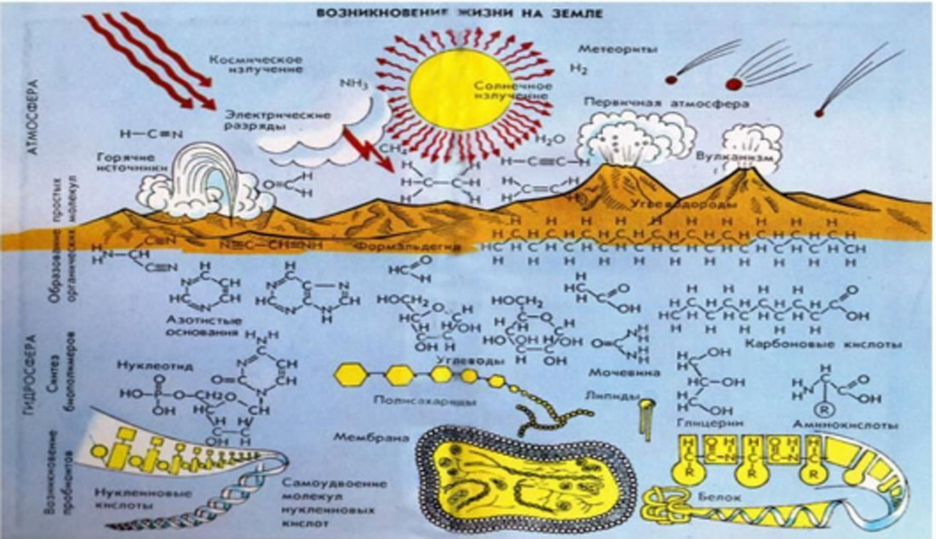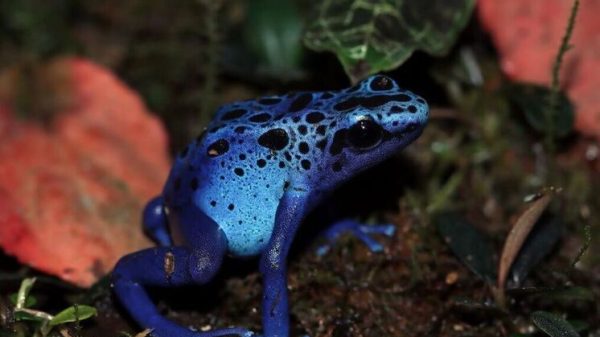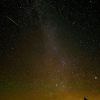The work of an outstanding scientist on the origin of life was published after his death
The latest article by Academician of the Russian Academy of Sciences Mikhail Marov, published not so long ago in the scientific Astronomical Journal and until recently unknown to a wide circle of readers, is devoted to how life could have appeared on our planet and whether it exists beyond the earth’s borders. The scientist who headed the department of planetary research and cosmochemistry of the Geochemical Institute of the Russian Academy of Sciences left us last year, and left us as a legacy the program article “Astronomical and cosmochemical aspects of the problem of the origin of life.”
 Mikhail Marov. Photo: Russian Academy of Sciences
Mikhail Marov. Photo: Russian Academy of Sciences
The topic under discussion, according to Marov, is interdisciplinary and belongs to the most fundamental areas of modern natural science. For example, to astrobiology related to astronomy and cosmochemistry. New ground-based and space instruments used by astrobiologists open up opportunities to observe cosmic molecular clouds, circumstellar gas and dust protoplanetary disks — the “cradle of life
Mikhail Yakovlevich explains, which allows for two options for the origin of life on the planet: through abiogenesis (the emergence of living beings from inorganic substances present on Earth) and panspermia (the origin of life as a result of its introduction from outer space).
Abiogenesis could have arisen in early geological eras, as the founder of geochemistry Vladimir Vernadsky said, “in the process of the geological circulation of substances.” According to Marov, warm, shallow ponds or underwater volcanoes could be likely sources of the “prebiotic compounds.” They could provide the basis for the processes of metabolism, copying and transmission of genetic information.
 Prebiological evolution of organic compounds on Earth in the Early Archean, preceding the formation of the biosphere.
Prebiological evolution of organic compounds on Earth in the Early Archean, preceding the formation of the biosphere.
However, Marov argues, another source of life on Earth is quite possible — it is brought from space. The possibility of the panspermia effect is proven today by meteorites, in which scientists discover the “building blocks of life” — amino acids, and even fossils of supposed primary cellular organisms. There is also a third idea — about the possibility of combining abiogenesis and panspermia in the processes of the origin of life, which was shared by Vernadsky.
But what kind of complex mechanism launched the energy so that all the components available or that came to Earth from space evolved and functioned on our planet? “We are still far from understanding the foundations of the origin and sustainable functioning of a living system,” writes Marov. “Obviously, these processes occurred at the molecular level in the general evolutionary “arrow of time.”
 Synergy of local (abiogenesis) and global (panspermia) sources of the origin of life.
Synergy of local (abiogenesis) and global (panspermia) sources of the origin of life.
According to him, there are different options that can lay claim to the role of a kind of “spark of life.” Some include the ancient world of RNA, others — the ATP (adenosine triphosphate) molecule. In particular, in the latter, Marov’s colleague, also academician of the Russian Academy of Sciences, Eric Galimov, who has also already left this world, saw the basis for the creation of functionally ordered living structures.
The idea of functional ordering, self-organization of everything in living nature was close to Mikhail Yakovlevich himself. Without this, in his opinion, life could not have arisen, since everything in nature tends to entropy, that is, disorder (or chaos).
Once, in a conversation with the author of this article, Mikhail Yakovlevich clearly explained how life struggles with chaos in nature using the example of… a teapot. “When we boil water in a kettle, we create a higher degree of its organization, but as soon as we turn it off, the water will immediately begin to cool, that is, dissipate the previously received energy until the temperature equalizes with the environment. By analogy with this, we can imagine all life on Earth: as long as we have a disequilibrium state with the surrounding nature (for example, a body temperature different from it), we are alive.”
 “Earth’s biological clock.” On the right is the evolution of microbial communities from primitive prokaryotes to nucleated eukaryotes that are part of the cells of more complex organisms. Photo: Astronomical Journal
“Earth’s biological clock.” On the right is the evolution of microbial communities from primitive prokaryotes to nucleated eukaryotes that are part of the cells of more complex organisms. Photo: Astronomical Journal
So, having become acquainted with the possible mechanisms of the origin of life, let us trace with Marov the main paths of evolution. “Following Vernadsky, modern researchers believe that the simplest organisms — eobionts (eobacteria) appeared on Earth 4.25 billion years ago, and the emergence of the photosynthesis mechanism in prokaryotic protobionts dates back to the period 4–3.5 billion years ago,” the scientist writes . “At the same time, cyanobacteria made a huge contribution to biogeochemical processes in the biosphere: they were the first in the world of prokaryotes to master oxygen photosynthesis and ensure the oxygen function of the biosphere.” For the first three billion years, there was only a gradually more complex world of bacteria. The first algae and mollusks appeared about 1–0.5 billion years ago, and mammals appeared only in the last 100 million years. The change in organisms over time occurred due to natural selection, known to everyone as Darwinism.
According to the scientist, the Earth is the only planet that meets a set of criteria suitable for the formation of life.
The limitation for Venus, according to Marov, is the irreversible greenhouse effect, which develops as the planet approaches the Sun and increases the temperature at its surface to 475 degrees Celsius, and the pressure of the carbon dioxide atmosphere to 90 atmospheres. It was reported that phosphine (hydrogen phosphorous) was discovered in the clouds of Venus, which, in addition to volcanic origin, may also have a biological origin. However, its presence was not confirmed by subsequent measurements.
The situation is different on Mars, where, judging by the residual geological landforms, favorable climatic conditions previously existed with an abundance of water on the surface. These conditions, according to the scientist, changed catastrophically about 3.8–3.6 billion years ago, leaving a waterless desert surface and a thin atmosphere. However, Mars still continues to excite the imagination of scientists with the possibility of discovering traces of life, or at least paleolife — fossil remains of microorganisms.
 Habitable zone in the vicinity of the Sun. Photo: “Astronomical Journal”
Habitable zone in the vicinity of the Sun. Photo: “Astronomical Journal”
To the traditionally asked question “Is there life on Mars?” relatively recently, another question was added: “Is there life on the satellites of Jupiter and Saturn?” For astrobiologists, as Mikhail Marov noted, their subsurface deep oceans are of particular interest. For example, oceans up to 100 km deep are suggested on the Jovian moons Europa and Ganymede.
“Europe is of particular interest; its water ocean 50–100 km deep under an ice shell 10–15 km thick is evidenced by an analysis of the morphology of the surprisingly smooth surface, as well as water geysers escaping through cracks,” writes Marov. According to him, the ocean may be warm, and the discovery of a noticeable magnetic field off Europa indicates that it is also salty. “In such a completely favorable environment, life could have arisen, the detection of which is becoming one of the most pressing tasks of future space missions,” the scientist noted.
Water geysers have also been discovered on the surface of Saturn’s very small moon Enceladus. But its other satellite, Titan, attracts attention due to the lakes of methane, ethane and other hydrocarbons on it, which could serve as the basis for more complex organic compounds. “The methane cycle (on Titan) with evaporation into the atmosphere and subsequent fall back to the surface is almost similar to the water cycle on Earth, with which the origin of the biosphere is directly related,” writes the academician.
In addition to terrestrial evolution, there is galactic evolution. According to model calculations, the galactic habitable zone, where the existence of terrestrial-type life is possible, is limited by a ring with a width of 7 to 9 kiloparsecs (1 kpc = 1000 pc = 3258 light years — author) from the center of the Galaxy. It is in this ring, according to Mikhail Marov, that there are stars that formed 8–4 billion years ago, including ours, which is located in the Orion Arm at a distance of 8 kpc from the center of the Milky Way. This ring-shaped region contains the majority (75%) of stars that may have planets on which life is possible, and these stars are older than the Sun on average by 1 billion years. “It follows from this that the peak of the emergence of life in the Galaxy has passed,” the academician concludes.
However, new prospects have emerged in astrobiology associated with the discovery of exoplanets at the turn of the last and present centuries. In just a quarter of a century, about 5,000 exoplanets of various types have been discovered, approximately two-thirds of which belong to planetary systems.
4,000 exoplanets have been discovered by NASA's Kepler Space Telescope. He determined the presence of a planet near a star by periodic changes in the brightness of the latter, caused by the passage of a planet in front of it. In addition to this method, writes Marov, scientists pin their hopes on the astrometric method, based on changes in the star’s own motion under the gravitational influence of the planet, and space telescopes-interferometers.
 Examples of the types of exoplanets discovered by the Kepler spacecraft.
Examples of the types of exoplanets discovered by the Kepler spacecraft.
So far, according to the scientist, due to instrumental limitations, few planets have been discovered that are close in their parameters to Earth. For example, the five planets orbiting the Sun-like star Kepler-444, 117 light-years away, are rocky, hot planets, one similar in size to Mercury, another to Venus, and the other three to Mars. They revolve around their star with periods within 10 Earth days.
Based on variations in the star's brightness, Marov writes, it was possible to determine the ratio of hydrogen and helium — a key parameter in judging the duration of stellar evolution. Thus, the age of Kepler-444, and therefore its planetary system, is 11.2 billion years, that is, they formed shortly after the birth of the Universe, which is 13.7 billion years old.
“If we assume “that on other similar planets, but with more favorable climatic conditions, life could have arisen and nothing prevented its evolution, it is difficult to even imagine how far ahead of Earth such life would have gone in its development,” the scientist notes.
< p>The other planet closest to Earth in terms of climatic conditions was Kepler-22b, with an equilibrium temperature of 262 K (-11.15 degrees Celsius) and an orbital period of 289.86 days. Its size is more than twice that of Earth. Of the discovered Earth-like planets located in the habitable zones of their stars, the planets Kepler 20e and Kepler 20f, close in size to Venus and Earth, are also of great interest, according to Marov. They are even called cousins of the Earth and have the highest Earth Similarity Index (ESI) to date.
The exoplanet Kepler-20e in the constellation Lyra is smaller than Earth. Its orbit is second to its parent star, but it is very close to the star, which is why its effective temperature should reach 760 degrees Celsius, which is higher than the temperature of Venus and quite enough to melt glass. Belongs to the class of mini-lands. A year on the planet lasts 6 Earth days.
Academician Marov's arguments about life outside our Galaxy are interesting. In his opinion, the development of life from a primitive state to the birth of intelligence is an extremely complex process that does not occur on all planets.
Astronomers, in his opinion, have made a lot of effort to search for intelligence in other worlds. He recalls the pioneering work of J. Cocconi and F. Morrison, who proposed the wavelength of the neutral hydrogen line as the most suitable range for interstellar communications. There were also many original projects and observations using increasingly powerful radio telescopes and signal analyzers (in particular, domestic astronomers Vsevolod Troitsky, Joseph Shklovsky, Nikolai Kardashev made a great contribution).
“Unfortunately, no positive results were obtained,” states the scientist. A more detailed analysis, he says, makes the situation even less optimistic. If we use the well-known Drake formula in the form of a multiplicative ratio of probabilistic criteria to estimate the number of technologically advanced civilizations in the Galaxy, then the only civilization existing in our Galaxy is terrestrial.
 Position of the Solar System in the Galaxy. Photo: “Astronomical Journal”
Position of the Solar System in the Galaxy. Photo: “Astronomical Journal”
However, the fact that the total number of stars in the Universe reaches the order of 10 to the 22nd power, he said, continues to stimulate the efforts of researchers.
In particular, many, relying on Drake’s formula, take into account the great uncertainty that the value L – “the duration of the existence of civilization” – introduces into it. They note that given the size of the Galaxy (100,000 light years) and the duration of civilization (L Earth = 10,000 years), there is not enough time to establish contacts. It is this disproportion that can explain the lack of contacts.
“An analogy is the appearance and collapse of bubbles on the surface of a puddle during rain,” says Mikhail Marov. – Considering that the distance between the “bubbles” reaches hundreds and thousands of light years and the sent signal does not have time to reach the recipient, not to mention establishing two-way communication. At the same time, we leave aside the philosophical question about the desire of an advanced civilization, due to egocentrism, to establish contact with its own kind or one that is lagging behind in development, say, thousands of years.”
These questions, according to the scientist, are the same as the concept of reason, similarities and differences of social communities are discussed in detail today in the works of scientists around the world.
Despite everything, Mikhail Yakovlevich still gives hope at the end of the article for the possible establishment of contact with the help of stunning successes in development information technology, biotechnology, molecular biology, biochemistry and other sciences. And he ends his discussion with a quote from Arthur C. Clarke: “…The most interesting branch of science is space exploration… The better we get to know the Universe, the more surprises we will get from it. Take, for example, the question of the existence of intelligent beings. I don’t think these creatures were like humans. Maybe they have three arms or three eyes — I don’t know, the future will answer this question, but there is no doubt that they exist in other worlds.”




















































Свежие комментарии